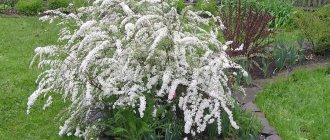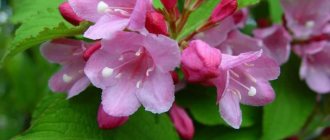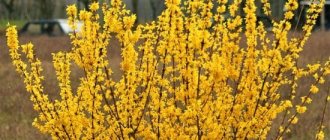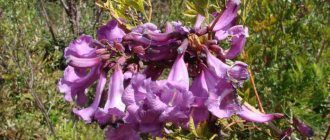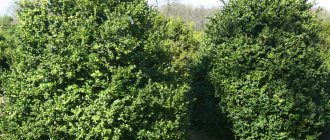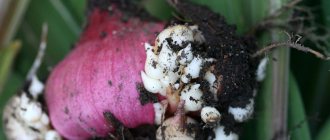Updated: 04/22/2021 16:43:03
Expert: Nikolay Alexandrovich
*Review of the best according to the editors of expertology.ru. About the selection criteria. This material is subjective in nature, does not constitute advertising and does not serve as a purchase guide. Before purchasing, consultation with a specialist is required.
The ornamental spirea shrub often attracts the attention of landscape designers. They value this plant for its lush flowering and spectacular coloring of foliage and inflorescences. Such unpretentious and hardy bushes are suitable for any landscaping option. In shape, spirea can be weeping, pyramidal, cascading, standing upright or creeping along the ground.
Varieties of spirea are also distinguished by the shape and color of their foliage. With the arrival of autumn, it often turns yellow, orange or red. Some spirea bloom in spring, others in summer. It is with this characteristic in mind that they are divided into 2 main groups. Each of them has its own characteristics. In this review we will look at the best varieties of spirea that bloom in spring and summer.
general information
Spiraea got its name from its shoots that are surprisingly flexible for a shrub, because from ancient Greek this word literally translates as “bend.” People call the popular ornamental shrub meadowsweet, so it’s likely that you know it by this name.
Spiraea combines truly vital features for our latitudes. It is at the same time very unpretentious, resistant to severe frosts and blooms for a long time even on the hottest days.
Photo: orchardo.ru
There are dwarf spireas that barely stretch up to 20 cm and are well suited for rockeries. But there are also full-fledged tall shrubs 1-1.5, or even up to 2.5 m. The meadowsweet bark has an interesting natural feature - it can peel off. This is its natural life cycle, which periodically frightens inexperienced gardeners.
All spireas have shallow and superficial, but very developed fibrous roots. The branches and leaves can be of completely different types, but the flowers are often similar. They are small, but there are a lot of them, and they are always collected in large lush inflorescences. Shades range from snow-white to rich dark pink.
Photo: stroim-sad.ru
Rating of the best varieties of spirea
| Nomination | place | Variety | rating |
| The best varieties of spring-flowering spirea | 1 | gray Grefsheim | 5.0 |
| 2 | Arguta | 4.9 | |
| 3 | Wangutta | 4.8 | |
| 4 | Thunberg | 4.7 | |
| 5 | Nippon Snowound | 4.6 | |
| 6 | oakleaf | 4.5 | |
| 7 | crenate | 4.4 | |
| The best varieties of summer-flowering spirea | 1 | Japanese Little Princess | 5.0 |
| 2 | Japanese Macrophylla | 4.9 | |
| 3 | Japanese Goldflame | 4.8 | |
| 4 | Japanese Froebelia | 4.7 | |
| 5 | Billard | 4.6 | |
| 6 | Japanese Golden Carpet | 4.5 | |
| 7 | Japanese Jenpei (Shirobana) | 4.4 | |
| 8 | Japanese Crispa | 4.3 |
Types of spirea
There are about a hundred varieties of spirea, and they all differ in appearance, flowering period and some features of life. Today we will tell you about the most popular of them!
Spiraea Wangutta
A large 2-meter shrub is good in decorative landscape compositions and hedges. It has a large and spreading cascading crown that provides broad shade. Snow-white flowers bloom twice a season - at the beginning and end of summer.
Photo: artem-sad.ru
White spirea
The flowers of this spirea look very gentle and romantic, and from a distance they resemble large white-green balls. The shrub is not too tall, but grows well in width - up to a meter. Paniculate inflorescences stretch up to as much as 15 cm.
Photo: greatfon.com
Gray spirea
This spirea blooms a little earlier than others and the shades of its inflorescences vary from white to grayish. Upon closer inspection, the tall shrub takes on a bizarre shape due to its curved shoots.
Photo: websadovod.ru
Spiraea Grefsheim
This is a very spectacular decorative variety with such snow-white and dense flowers that it is popularly nicknamed May snow. Spirea Grefsheim is good even alone, and even more so in a small group along garden and park paths.
Photo: agroklassiksnab.ru
Spiraea douglas
The large pyramidal inflorescences of this spirea resemble loose pink tassels. An interesting feature of the variety is the reddish and slightly pubescent shoots, with which the leaves with a silvery tint contrast.
Photo: floraplanet.com
Spiraea Boumalda
Compact bushes up to 70-80 cm resemble a lush and elastic ball. Against a bright green background, red-pink and slightly variegated flowers stand out even more expressively. There are even more compact hybrids that will fit perfectly into alpine hills and flower beds.
Photo: disota.ru
Willow spirea
This spirea loves moisture and will ideally complement a pond, delighting with paniculate pink inflorescences. Its leaves really resemble willow leaves, and this variety is often used in folk medicine as a source of invaluable microelements.
Photo: plantarium.ru
oakleaf spirea
The very early May variety is suitable for large group plantings and landscaping in parks. The one and a half meter bush propagates well by root cuttings and easily tolerates shaping pruning.
Photo: sdelai-lestnicu.ru
Japanese spirea
One of the brightest varieties came to us from the East and delights us with crimson, almost red flowers. Shoots up to one and a half meters long are crowned with bizarrely shaped lush inflorescences.
Photo: fedsp.com
Spiraea thunberg
This is a medium-sized mountain variety, which has decorative not only flowers, but also leaves. In autumn, they acquire a rich orange hue and themselves resemble lush inflorescences. But this spirea is not the most frost-resistant, so it can freeze in the northern regions.
Photo: rassadacvetov.com
Verbena (85 photos): types, proper care
Brief description of the plant
Spiraea is a plant native to Japan, Korea and China. It is characterized by abundant flowering, especially in spring, and beautiful leaf color in autumn. These beautiful ornamental shrubs bloom, depending on the species, from April to May or from June to September. They have little soil requirements, but they grow better in good conditions and love sunny, not dry places. Spiraea tolerates air pollution well.
These are ornamental perennial plants with a moderate growth rate. Caring for them does not require much time and effort; propagation involves rooting herbaceous or woody cuttings. Almost all types of spirea are winter-hardy.
The botanical type Spiraea (Spiraea L.) includes about 80 species. Many of them are grown as ornamental plants. Varieties and types of spirea vary greatly in height, color of leaves and flowers, and flowering time.
According to the shape and method of flowering, spirea species are divided into 2 groups:
- Early flowering period (April-June) - flowers appear on last year's shoots, collected in small white umbrellas.
- Late - summer flowering (late spring - summer - early autumn) - pink color predominates, the most popular type is Japanese spirea and its many varieties. The birch leaf species is noteworthy.
Spirea care
Spiraea is amazingly unpretentious, almost never gets sick and delights with lush flowering all summer long. The flowers bloom thickly even on the hottest days, when other plants dry out and wither.
Temperature and lighting
Spirea prefers warmth and bright light, but it is recommended to plant it on cloudy September days. With the onset of warmth in the spring, only summer varieties are planted.
Photo: pokter.ru
Watering
If the season is wet, natural precipitation is sufficient for spirea. In very dry months, it is recommended to water each bush well at intervals of approximately 2-2.5 weeks. One spirea will take one and a half buckets of water, and it is convenient to combine the procedure with fertilizing.
Photo: domashniecvety.ru
The soil
Spiraea prefers ordinary leaf soil or turf, into which peat and sand are added for looseness. The shrub is not too demanding on the composition of the soil, but the richer it is, the more lush it will be. A good drainage layer of sand or broken brick is required.
Photo: domashniecvety.ru
Fertilizers and fertilizing
Spiraea does not need too intensive feeding, but with it it will bloom even more magnificently and longer. The simplest organic fertilizers, such as mullein infusion, with the addition of a packet of superphosphate, work well. We recommend mulching the tree trunk area to prevent the bush from becoming overgrown with weeds.
Photo: teplica-one.ru
Transplantation and propagation
Not all types of spirea can be propagated by seeds, and this takes too long. In the first year, only one shoot without branches and one tap root are formed. The bush will branch more or less normally only after 3-4 years, and then it will be able to bloom for the first time.
Shrubs reproduce well by cuttings, and the survival rate on average reaches 70%. Some varieties even give 100% rooting with minimal treatment with stimulants.
As an alternative, in the spring they use layering, which is bent into a hole in the ground, pinched, dug in and always insulated for the winter. Next year, the cuttings can be separated from the mother plant and replanted separately.
When planting spirea in a hedge, you need to leave a distance of about half a meter between the seedlings. For planting spirea in group plantings, it can be varied up to a meter. The depth of the hole under the rhizome is also about half a meter.
Photo: industry60plus.ru
Trimming
The specifics of pruning spirea depend on the specific variety, because they form inflorescences differently. In early species, buds are formed along all last year's shoots, so they cannot be cut off annually. In late species, inflorescences develop only on new shoots of the same year, so they need to be pruned in the spring.
Photo: nivaki.ru
Wintering
Most varieties of spirea winter well in mid-latitudes and northern regions. In some of them, even flower buds are damaged only at a temperature of -50 degrees. For more sensitive species, it is recommended to tie the tops into a bunch so that they are less likely to freeze.
Photo: go2outback.ru
Purslane (80 photos): types, reproduction and care
Geographic summary
Spiraea got its name due to the elasticity and flexibility of the branches. From Latin this word “spiraea” is translated as “spiral”. And from the Greek “speira” means “bend”. Indeed, the bush is able to bend bizarrely and grow in the right direction. In landscape design, it is often used as a basis for hedges.
Lush and abundant flowering of the bush
The popular name of the culture is meadowsweet. The name "White Bride" is also found. According to data from the dictionary of V.I. Dahl, in the old days its thin shoots were used to produce ramrods and whips.
A plant planted in a large group looks luxurious. A bush with single flowers looks no less impressive. An artistic approach to garden design will help you create a skillful composition from different specimens.
Spiraea hedge
Spiraea feels most comfortable in forest-steppe, semi-desert and steppe zones. Found mainly in the Northern Hemisphere. The Asian southern border is the Himalayan mountains, the North American border is the territory of Mexico.
The plant is noted to be resistant to drought and severe frost. Its soil-strengthening properties are highlighted. Some varieties are used as a source of medicinal raw materials due to the presence of ascorbic acid, carotene, saponins and other healing substances in the composition.
Campsis: description, types, planting in open ground, propagation and care of a beautiful vine (85+ Photos & Videos) + Reviews
Pest and disease control
Spiraea has a very strong immune system by nature, so most diseases are somehow provoked by improper care. Due to waterlogging, fungal diseases such as verticillium appear. The methods of control are always the same - quickly remove the damaged fragments and treat the bush with insecticides.
Of the pests, spirea is loved by spider mites and aphids, which the vast majority of plants in the garden cannot avoid. We recommend using home remedies whenever possible and resorting to chemical insecticides only as a last resort.
Spiraea is loved by caterpillars, which eat up its succulent leaves, and anthills are often found near it. The rosaceous leaf miner settles on the outer side of the leaf blades. The superficial root system attracts garden rodents and moles.
Photo: go2outback.ru
Landing technology
- Before planting, soil is first poured into the bottom of the hole, and then the seedling is installed, all the roots are straightened out and only then everything is carefully covered with an earthen mixture.
- The bush is planted so that the root collar (the junction of the trunk and roots) is located at ground level.
- Before planting, the root system must be inspected and broken and dried roots must be cut off.
- If you plant a seedling with a lump of earth, then after planting, carry out good watering.
And if the root system is bare (without soil), then it is placed for 12 or 24 hours in a solution of water and a root formation stimulator. This can be heteroauxin, succinic acid, indolylacetic acid and various other drugs that can be purchased at any garden or flower center. Plants treated in this way are immediately planted in their permanent growing location.
We also need to remind you of one nuance that should be taken into account when preparing the hole for planting. Although spirea love moisture, there should be no water (underground or after rain) near their roots under any circumstances. Therefore, if planting is done in the ground with a large amount of clay, then drainage must be poured into a hole (dug 2-3 times larger than the root system of the bush).
For this, gravel or crushed stone is usually used. The height of the layer should be 10 -15 centimeters. Then soil is poured over the drainage, into which young spirea is planted.
Spiraea – photo
You've probably encountered spirea, although it wasn't always clear what it was. Look at the photos to see how diverse its flowering bushes can be!
Photo: raznyecvety.ru
Photo: forum.dnepro.net
Photo: ogorod-bez-hlopot.ru
Photo: domashniecvety.ru
Photo: sobolevsad.ru
Photo: krrot.net
Photo: leroymerlin.ru
Photo: mirlandshaft.ru
Photo: plododom.rf
Photo: korekozevo.ru
Photo: svyatovit-spb.ru
Photo: orchardo.ru
Photo: bukmas.ru
Photo: lensadspb.ru
Photo: oir.mobi
Photo: samdizajner.ru
Photo: asnka.ru
Photo: schit-gornyi.ru
Photo: domashniecvety.ru
Photo: svyatovit-spb.ru
Photo: oz90.ru
Photo: etsy.com
Photo: shop.treeandlandscapecompany.com
Photo: flopit.ru
Photo: vk.com
Photo: mdv63.ru
Photo: pibig.info
Photo: domashniecvety.ru
Photo: divo-dacha.ru
Photo: clever-sad.ru
Photo: liveinternet.ru
Blueberries: varieties, care and cultivation (photo)
Reproduction
The shrub is propagated by seeds and vegetatively (cuttings, offsets, shoots).
Seed propagation
The box is filled with good quality soil, ideally leaf soil is mixed with peat. The seeds are placed evenly on the surface of the soil and sprinkled with 1 cm of peat. After 7–12 days, the first shoots can be seen, and this is the optimal time for treatment with Fundazol. The box is placed in the shade, the soil mixture is regularly watered and loosened. And only after 60–90 days are the seedlings transplanted onto the ridge. To make the plant easier to transplant, the roots are shortened slightly with very sharp pruning shears. Before starting work, the cutting tool is treated with a pink solution of potassium permanganate.
Important! Hybrids and ornamental varieties are not propagated by seeds.
Branches and shoots
The organization of diversion begins in early spring, immediately after the awakening of the buds. A long, healthy branch undamaged by frost is bent to the ground, the middle part of the shoot is sprinkled with earth, and the crown is attached to a support. In case of severe drought, not only the mother bush is watered, but also the rooting site. In order for the roots to form and grow more actively, all flower stalks are removed from the branch (even before flowering begins). The allotment is separated only for the next year.
Info! Spiraea produces a large amount of root shoots, which take root well after transplantation. Transplantation (separation from the mother plant) is best done in early spring; the young bush may not survive severe frosts.
Green cuttings
Carry out only in very cloudy weather, or during periods of light precipitation, when air humidity is close to 100%. First, inspect the uterine bush; it must be in excellent health and development, and be free of pests and diseases. Only cuttings formed this year are suitable for green cuttings.
Last year's shoots in the summer are usually already covered with bark, which will prevent normal rooting. It’s also not worth taking the top, it has a high water content, so there is a high risk of the sample rotting.
We prepare the necessary available tools:
- 2 small containers;
- boiled chilled water;
- potassium permanganate;
- clean medical gloves;
- sharp high-quality pruning shears;
- white plastic bag;
- root growth stimulator according to the Kornevin type.
Important! If the pruning shears are not sharp enough or cut poorly, then all cuts are corrected with a sharp blade or scalpel. You need to cut the branches slightly diagonally, then the formation of roots occurs more actively and the risk of rotting is reduced.
Further algorithm for preparing cuttings:
- Mix water and potassium permanganate to form a light pink solution and pour it into a clean container.
- We put on gloves.
- We rinse our hands in water with potassium permanganate, this will help disinfect the latex gloves.
- First, we cut large shoots from which we can prepare specimens for rooting.
Specimens for rooting should be 7–9 cm long. The lower leaves are removed, and the top 2–3 are cut in half. The planting material prepared in this way is immediately placed in a light pink solution of potassium permanganate. Even slight drying will reduce the rooting percentage.
How to water the crop correctly?
It is worth understanding that different types and varieties of spirea (photos and descriptions of the shrub can be found at the beginning of the article) differ in their individual preferences for care. And although the culture is unpretentious, you still need to follow certain rules in order to achieve beautiful flowering. For example, it is important to follow certain recommendations when watering so that the plant does not experience a lack of moisture, but also does not dry out from root rot.
The root structure of the tree is designed in such a way that it goes several meters deep. In this regard, watering shrubs has one very important feature - it should be quite plentiful. As a rule, one adult variety will have to use about 15-20 liters of water at a time. Low-growing bushes need 10-15 liters. However, it is under no circumstances necessary to water the spirea frequently, as this will cause stagnation of moisture in the soil.
Also, during watering, it is strongly recommended not to allow the soil to harden, so as not to block the access of oxygen to the root system. Responsible gardeners recommend regularly loosening the soil after moisture has been added to it, but do it carefully so as not to damage the roots. It is also worth getting rid of weeds in time, pulling them out by the roots, since they will take moisture and beneficial microelements from the soil.

